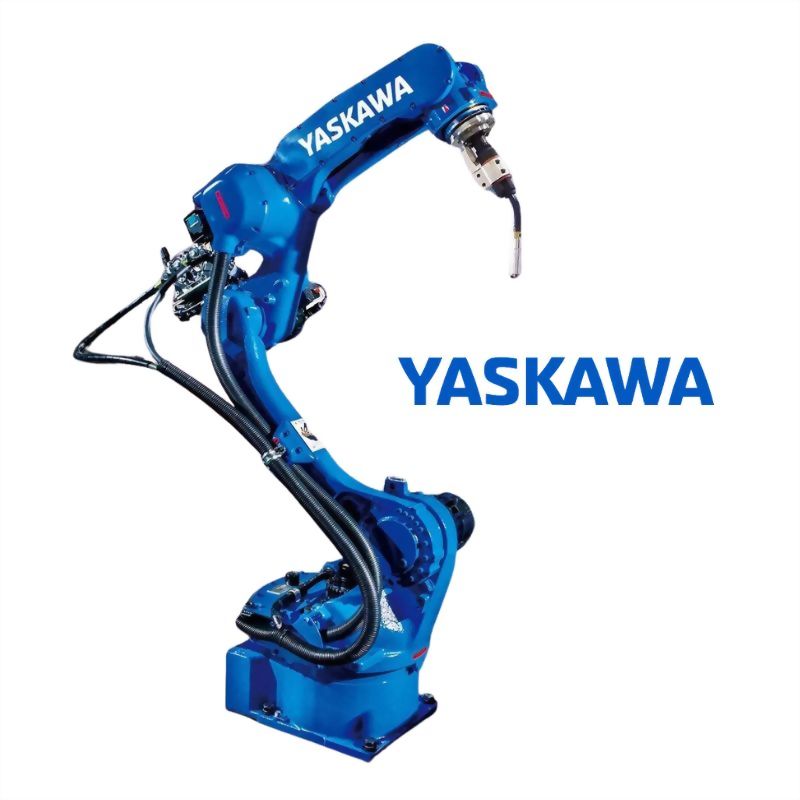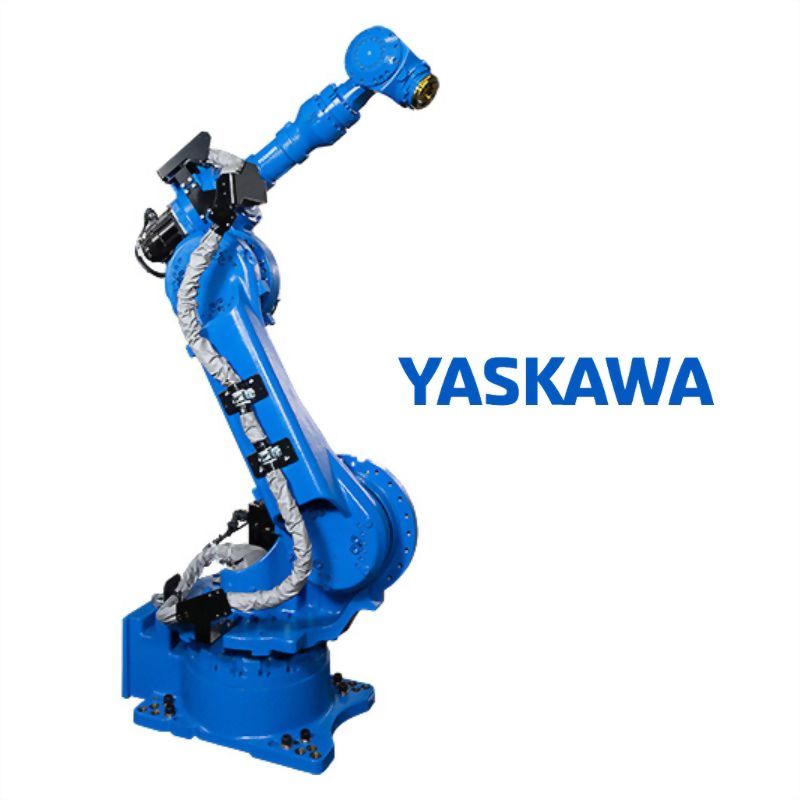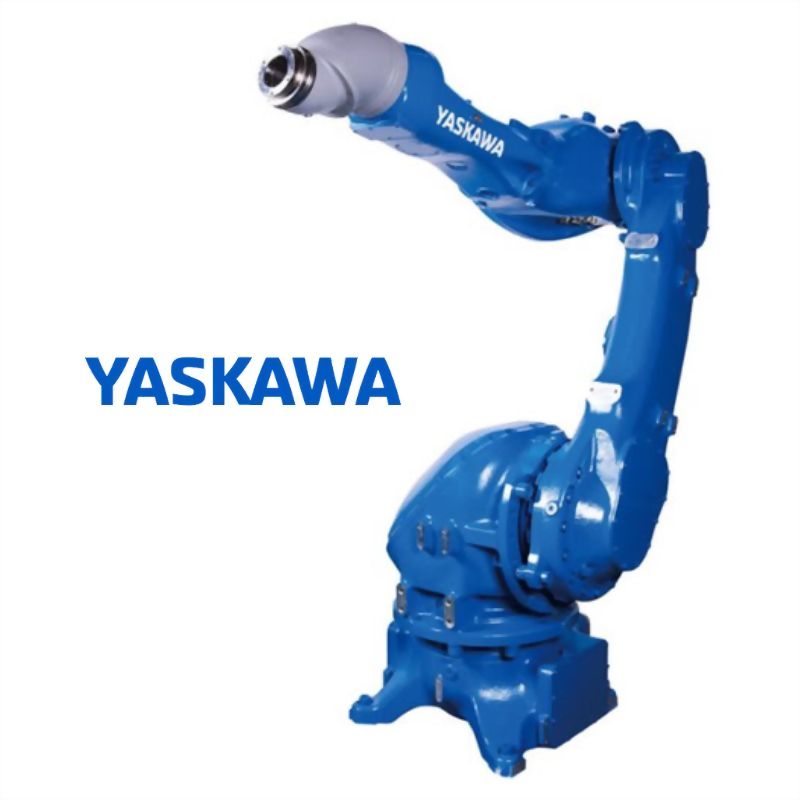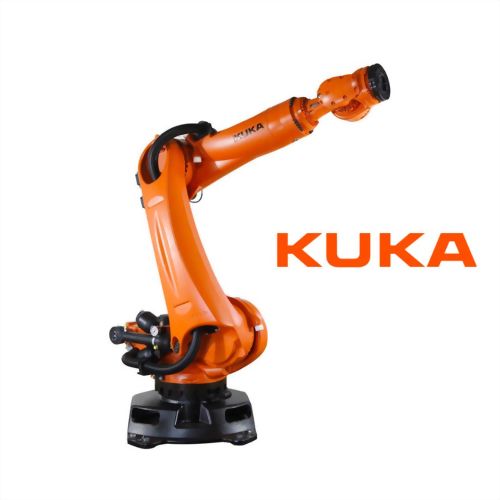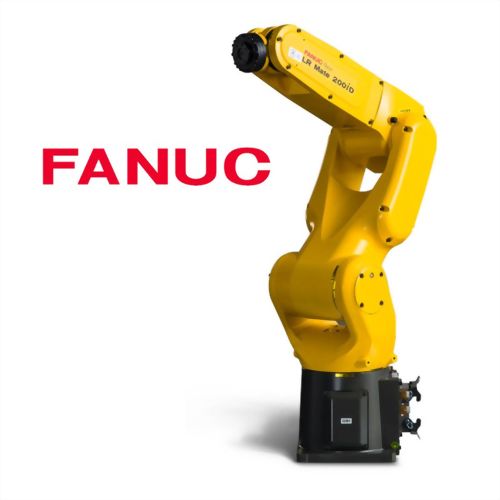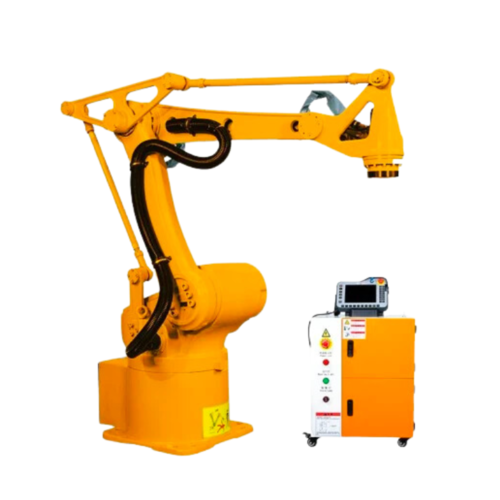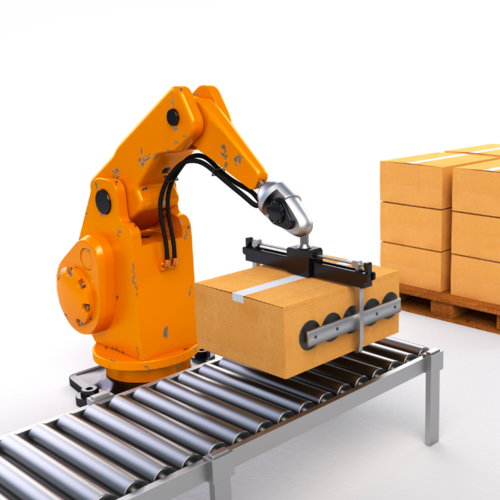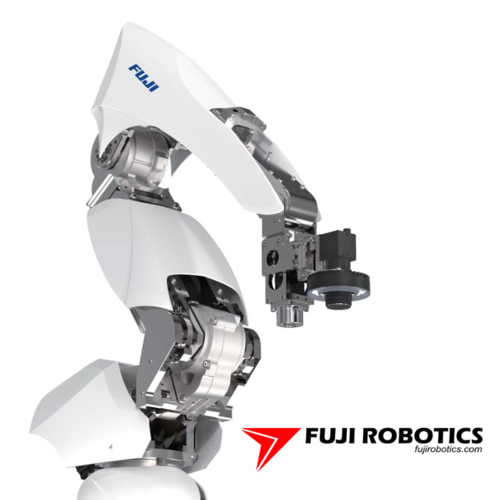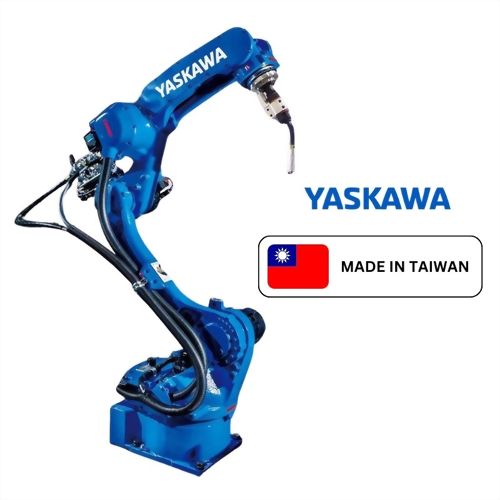Yaskawa Robot Arm Automation
1. Industrial Automation
Manufacturing
Robot arms are commonly used in manufacturing processes, such as assembly lines, welding, painting, and material handling. They can improve efficiency, accuracy, and speed in production.
2. Types of Robot Arms
SCARA (Selective Compliance Assembly Robot Arm)
Designed for tasks like assembly and pick-and-place operations.
Articulated
Consists of rotary joints and can have various configurations. Commonly used in welding and painting applications.
Cartesian/Gantry
Moves in a rectangular shape and is suitable for applications like CNC machining.
Delta
Known for high-speed and precision in tasks such as packaging and sorting.
3. Programming
Offline Programming
Robot arms can be programmed offline using specialized software, allowing for simulation and optimization before implementation.
Teaching Pendant
Some robots can be programmed using a teach pendant, where the operator physically guides the robot through the desired motions.
4. End Effectors
The end effector, or tool, attached to the robot arm is crucial for performing specific tasks. Grippers, welders, and sensors are examples of end effectors.
5. Sensors
Robot arms can be equipped with various sensors, such as vision systems and force/torque sensors, to enhance their capabilities. Vision systems can be used for object recognition and tracking, while force/torque sensors enable more delicate interactions.
6. Collaborative Robots (Cobots)
Some robot arms are designed to work alongside humans, known as collaborative robots or cobots. These robots are equipped with safety features, such as force-limiting and speed monitoring, allowing them to work safely in close proximity to humans.
7. Benefits
Efficiency
Automation can lead to increased production rates and consistent product quality.
Accuracy
Robot arms can perform precise and repetitive tasks with high accuracy.
Safety
Automation can improve workplace safety by handling hazardous tasks or working in environments unsuitable for humans.
Flexibility
Robot arms can be reprogrammed and adapted for different tasks, providing flexibility in manufacturing processes.
Discover tailored solutions for your unique requirements. Connect with our expert engineers to explore the perfect fit for your brand and model. Click below to learn more.
| Model | EC-102 | EC-171 | EC-201 | EC-201W | |
| Mechanism | Articulated Structure | ||||
| Operation type | Cylindrical Coordinates | ||||
| Maximum Payload (including End Effector) | 160kg (350 lbs) | 160kg (350 lbs) | 200kg (440 lbs) | 320kg (700 lbs) | |
| Maximum Palletizing Capacity | 1200 cycles/hour | 1600 cycles/hour | 1800 cycles/hours | 600 cycles/hour | |
| Degree of Freedom of Motion |
4-axis (5th axis optional on end effector) |
||||
| Operation Range | Z axis (vertical) | 2300mm (90.50") | 2400mm (94.75") | 2300mm (90.50") | |
| R axis (horizontal) | 1500mm (59.00") | 1600mm (63.12") | 1500mm (59.00") | ||
| Θ axis (rotation) | 330° | ||||
| A axis (Wrist) | 330° | ||||
| Teaching Memory Space | 120-400 Programming Locations (Blocks) available | ||||
| Teachingless Systems | Standard equipment | ||||
| Teaching Pendant | Standard equipment | ||||
| Power Supply | (208-220 V AC, 3-phase, 50/60 Hz) | ||||
| Required Electric Capacity | 3.5 KVA/ 9.7 A | 4.0 KVA/ 10.5 A | 6.5 KVA / 17 A | 7.0 KVA / 17 A | |
| Pneumatics (Air Supply) | 0.5 MPa | ||||
| Required Air Pressure Capacity | 120 Nl/min | 160 Nl/min | 225 Nl/min | ||
| Body Weight (excluding End Effector) | 700 kg (1544 lbs) | 750 kg (1654 lbs) | 1150kg (2536 lbs) | ||
1. Modular Design
A modular design that allows for easy customization and adaptation to various tasks and industries.
2. Customization
The ability to tailor the robot arm system to specific requirements, ensuring it meets the unique needs of different applications.
3. One-Stop Solution
Comprehensive integration of hardware, software, and support services in a single solution, simplifying procurement and deployment for end-users.
4. Flexible Programming
Advanced programming capabilities that provide high flexibility in defining and modifying robot tasks, allowing for quick adjustments to changing production requirements.
5. User-Friendly Interface
An intuitive and user-friendly interface for programming and operating the robot arm, reducing the need for extensive training and expertise.
6. High Payload Capacity
A robust design with a high payload capacity to handle a wide range of tasks, from light assembly to heavy-duty material handling.
7. Adaptive Gripping Technology
Grippers equipped with adaptive technology, allowing the robot arm to handle various shapes, sizes, and materials without the need for constant reconfiguration.
8. Vision Systems
Integrated vision systems for object recognition, tracking, and quality control, enhancing the robot arm's ability to perform complex tasks with precision.
9. Collaborative Features
Collaborative capabilities that enable safe interaction with human operators, promoting a work environment where robots and humans can work together effectively.
10. Energy Efficiency
Energy-efficient components and systems that contribute to overall operational cost savings and align with sustainable practices.
11. High Recycling Efficiency
Design and features that contribute to high recycling efficiency, potentially by incorporating automation into recycling processes or waste reduction initiatives.
12. Low Maintenance
A design that minimizes the need for frequent maintenance, ensuring continuous operation and reducing downtime.
13. Remote Monitoring and Control
Remote monitoring and control capabilities that allow users to manage the robot arm system from a distance, providing flexibility and quick response to issues.
14. Smart Sensing Technology
Smart sensors that enhance the robot arm's ability to adapt to dynamic environments and make real-time decisions.
15. Efficient Resource Utilization
Optimization of resource utilization, including materials and energy, to contribute to cost-effectiveness and sustainability.
16. Reduced Manpower Requirements
Automation features that significantly reduce the need for manual labor, optimizing operational efficiency and reducing labor costs.
17. Compliance with Industry Standards
Adherence to relevant industry standards and safety regulations to ensure the robot arm system meets quality and safety requirements.
1. Manufacturing and Assembly
Robot arms are widely used in manufacturing processes for tasks such as assembly, welding, painting, and quality inspection. They can handle repetitive tasks with high precision and speed, improving efficiency and consistency.
2. Material Handling
Robot arms are employed in material handling tasks, including picking, placing, and sorting objects in warehouses and distribution centers. They can handle a variety of materials, sizes, and weights.
3. Packaging and Palletizing
In the packaging industry, robot arms are used for packing products into boxes, labeling, and palletizing. Their flexibility allows for quick adjustments to handle different product sizes and packaging configurations.
4. Welding and Metal Fabrication
Robot arms are commonly used for automated welding in industries such as automotive and aerospace. They provide precise control over the welding process, resulting in high-quality welds.
5. Painting and Coating
Robot arms equipped with paint or coating applicators are used in the automotive, aerospace, and consumer goods industries for consistent and uniform surface finishing.
6. Medical Surgery
Surgical robot arms assist surgeons in performing minimally invasive procedures with enhanced precision. These robots are often used for procedures such as laparoscopic surgery.
7. 3D Printing
Robot arms are integrated into 3D printing systems to provide precise layering of materials. They are used for additive manufacturing in various industries.
8. Electronics Manufacturing
In the electronics industry, robot arms are utilized for tasks like circuit board assembly, soldering, and testing. They can handle small and delicate components with high accuracy.
9. Food Processing
Robot arms are employed in food processing for tasks such as sorting, packaging, and handling delicate food items. They help maintain hygiene standards and increase production efficiency.
10. Pharmaceuticals
In pharmaceutical manufacturing, robot arms can be used for tasks like pill packaging, labeling, and sorting. They contribute to precision and quality control in the production process.
11. Agriculture
Robot arms are used in agriculture for tasks such as fruit picking and sorting. They can work in conjunction with vision systems to identify and handle crops with care.
12. Construction and Demolition
Robot arms equipped with tools like jackhammers or concrete sprayers can be used in construction and demolition activities, enhancing safety and efficiency.
13. Automated Inspection
Robot arms equipped with vision systems and sensors are employed for quality control and inspection tasks, ensuring products meet specified standards.
14. Research and Development
Robot arms are used in laboratories for various research and development activities, including testing prototypes, handling samples, and conducting experiments.
15. Entertainment and Theme Parks
Robot arms are used in entertainment applications, such as animatronics in theme parks, creating lifelike movements for characters and attractions.


